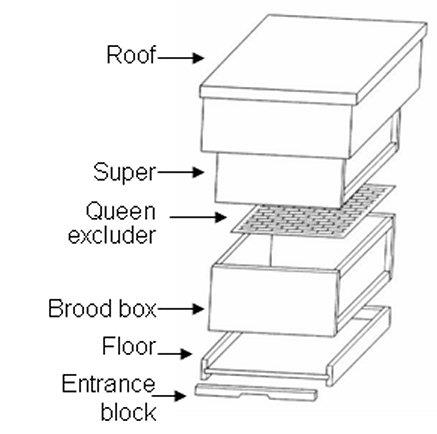
Beekeeping
Beekeeping is not difficult, and there are many sources of information for the newcomer. The best way to learn is from experienced beekeepers, and the beginner is advised to join their local beekeeping association and take an introductory course on beekeeping. If you are still undecided about becoming a beekeeper, you should attend one of the many one-day “Taster” courses that demonstrate what is involved.
There are many books on beekeeping. In addition, there are numerous Beekeeping Journals and online resources available. We would recommend.
The BBKA Guide to Beekeeping, 2nd Edition, by Ivor Davis and Roger Cullum-Kenyon, 2016
Haynes - The Bee Manual: The Complete Step-by-Step Guide to Keeping Bees, by Adrian and Claire Waring 2014
The bees
A variety of honeybees have been imported into the UK over the years, for reasons such as docility and larger honey yield. However, interbreeding often results in the loss of the beneficial characteristics and the development of undesirable traits. There is now a strong movement to maintain the indigenous European dark bee, Apis Mellifera Mellifera. This bee is generally agreed to be most suitable for our conditions, so we recommend you obtain your bees locally, preferably through your local beekeeping association.
It is usual to start with a nucleus, which is a small colony with a new and laying queen. The bees should be free of disease. Such colonies usually become available in May or June. Alternatives are to buy a full colony or to obtain a swarm.
Bees can be kept in a variety of places, including gardens, roof spaces, or in the corner of a field. If you do not have a suitable site at home, your local association can often help you find an “out apiary.”
Basic equipment is needed to get you started. This includes:
- Protective clothing, such as a bee suit with integral hood and veil, gloves and wellington boots.
- A smoker to calm the bees.
- A hive tool to open the hive.
- A hive. The most common type in the UK is the National hive.
The National Hive consists of:
- Roof: to keep the hive dry.
- Crown board: A board with one or more holes for ventilation, feeding or clearing the bees,, which sits on top of the boxes.
- Supers: One or more boxes where the bees can store honey.
- Queen excluder: A grill with spacing such that worker bees can pass through, but the queen cannot.
- Brood box: Where the queen lays her eggs.
- Floor: A tray with an entrance for the bees and usually with a mesh base.
- Entrance block: Restricts the entrance.
The brood and super boxes contain typically 10 or 11 wooden frames. These hold thin sheets of wax with a preformed cell-pattern (foundation). The bees build their wax cells on this foundation, and the queen lays eggs in the frames of the brood box. The worker bees collect nectar that is deposited in the supers above the queen excluder.
Can you keep bees? Of course you can!
It doesn’t matter whether you live in the city or the country. You do not even need a garden, as you can “rent” a beehive in an “out apiary” – like an allotment for bees! Your local beekeeping association will be able to help you find someone locally who would like to have bees on their land and would welcome a beekeeper.
As with any hobby, you need to do your research first. Visit the National Beekeeping Centre Wales; contact your local association; or perhaps enrol on a beginner’s course or become a volunteer. There are many ways to get started. Once you’re bitten by the beekeeping bug, we promise you will get so much from it!
Keep bees and you will:
- Enjoy a fabulous and fascinating hobby
- Help the environment and biodiversity
- Produce your own honey and beeswax
- Benefit from help, advice, and maybe make new friends along the way
Click here to download our handy leaflet for more information on getting started (pdf file, requires Adobe Reader).
If working with bees is not your thing, you can still help by making your garden or allotment more bee-friendly.

